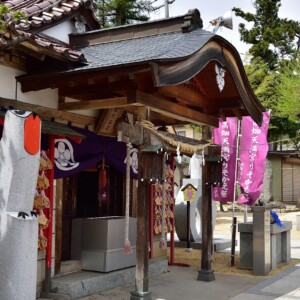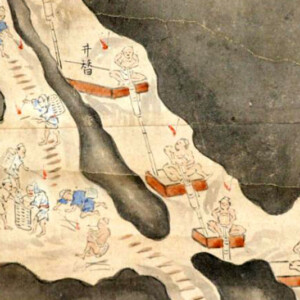
[Akita Prefecture] What is Kashima? Detailed explanation of the doll Dosojin belief passed down in Akita Prefecture
table of contents
Dososhin, or roadside gods , are said to be found at the borders of villages and along mountain passes, and are believed to ward off foreign epidemics and evil spirits . It is notable that there are many different types and shapes of these gods all over Japan.
This article provides detailed information about the Jizo statue
What are Jizo statues?
Dososhin, the god of the roadside and the guardian deity of the village , is considered to be the deity closest to people in folk beliefs. They are enshrined mainly as stone monuments or stone statues at the borders of settlements, in the center of villages, on the border between villages and outlying areas, at crossroads and three-way intersections.

"Daozu," the god of roads worshipped in China since ancient times , and the ancient Japanese "God of the Road." He was enshrined at village boundaries, crossroads, and other places considered to be "boundaries," and was believed to be a guardian deity that warded off all kinds of disasters that invaded from outside.
In the modern era, the form of worship has changed, and he is now worshipped as a god of matchmaking, a god of safe travels, and a god who is friendly with children
Kashima-sama ?
Kashima-sama is the rice spirit (Ukami no Tama) and has spiritual powers that enhance people's vitality. In Akita Prefecture, there are six Kashima-sama statues in Yuzawa City, seven in Yokote City, three in Misato Town, three in Senboku City, and one in Daisen City.
![Akita's roadside god [Kashima-sama]](https://jp.neft.asia/wp-content/uploads/2023/07/25793233_m-800x600.jpg)
They are huge, standing at 3 to 4 meters tall, and given their role as roadside gods, one would think they should be installed at the entrances to all roads leading to settlements, but what is unique about Kashima-sama is that only one statue has been installed
Those with faces made of rice straw are more common in southern Akita Prefecture, while those with faces made of wood can be found in both central and southern Akita Prefecture
Kashima statues are also made in various forms, such as ones with large straw sandals hanging from them, or ones that are just Nio masks like votive plaques
Kashima-sama has long been worshipped in Akita as a roadside god, but what kind of god is he?
the enshrined deity at Kashima Shrine which was founded in 660 BC (the first year of the reign of Emperor Jimmu) and is said to be Takemikazuchi-no-Okami, the god of the founding of Japan and martial arts
a "chokatsu" (straight sword) that is over 2.7 meters long . This is carefully preserved the sword of Takemikazuchi-no-Okami and the oldest and largest sword in Japan
Reference: Kashima Shrine official website
About Kashima Festival
The Kashima Festival is a traditional event held from spring to summer to drive away anything that harms life.
As a traditional event, it is classified as a Mushi Okuri ceremony, which is held to exterminate pests and pray for a good harvest, and in Akita Prefecture it is held in Oga City, Akita City, Daisen City, Yokote City, Yurihonjo City, and other cities from around the fourth week of June to the second week of September
Generally, the Kashima dolls made from rice straw are placed on a Kashima boat, taken around the town for purification, and then released into the river
Memories of Kashima Nagashi
The author attended Daisen City Omagari Elementary School and has experience participating in the Kashima Nagashi festival
To make the Kashima dolls that will be placed on the Kashima boats, students from each grade are responsible for creating parts such as the face and decorations, and then the third graders assemble the completed dolls into Kashima dolls
The well-made Kashima dolls were displayed in the hallways for a while, after which the PTA members and teachers placed them on a Kashima boat to finish them off
Since I entered school, I have always admired the Kashima dolls that are displayed in the hallways every time the Kashima Nagashi festival is held, so when I was in my third year and wanted to make a Kashima doll, I had already imagined the idea of making armor using several colors of glossy colored paper
In fact, when I was in my third year, my father, who was an architecture teacher at a technical high school, saw me clumsily trying to assemble a Kashima doll and asked me if I would like to try making armor out of bamboo strips
My father was very dexterous and made prototypes for me, so I tried to imitate him, but I remember that as a third-grader, it was quite difficult to line up the bamboo sticks neatly and glue them together
After that, I painted it nicely and assembled the other parts, and it turned out to be a very impressive warrior
I liked it so much that I was secretly hoping that I would be chosen as the captain to ride at the front of the Kashima boat, but when I checked the day before the Kashima float, I was told that I had been chosen third, which I remember feeling a little disappointed
However, when I went to school the next day, my Kashima doll had turned into a general
Apparently, a PTA official saw how well my doll turned out and decided to change the location
I was very happy to see the Kashima boat, but when it was time to set it alight on the Omono River, I felt very sad to see it go, and I even remember wishing someone would help save my doll
I sincerely hope that the Kashima Nagashi festival will continue at Omagari Elementary School for a long time to come
Reference: Daisen City Omagari Elementary School "Distinctive Education and Events"
summary
Kashima-sama is a humanoid Jizo deity made of rice straw that is inhabited by the rice spirit (Ukami no Tama) and has spiritual powers that enhance people's vitality.We learned that Kashima-sama is loved in various ways in Akita Prefecture, such as being worshiped on the roadside or used as a doll in the Kashima Nagashi event to take on anything that brings harm to people's lives
If you see Kashima-sama, please put your hands together in gratitude


![Hot springs gush out in a place where there are no volcanoes! "Yuzawa Geopark" where you can see the mystery of the earth up close [Akita Prefecture] 4550228_m](https://jp.neft.asia/wp-content/uploads/2023/02/4550228_m-150x150.jpg)
![The popular game "Matagi" started in Kitaakita City! [Akita Prefecture] matagi](https://jp.neft.asia/wp-content/uploads/2024/04/matagi-150x150.jpg)
![Yurihonjo City, where Honjo, Kameda and Yajima domains were intersected between the Kubota and Shonai domains [Akita Prefecture] FF2C8AAA4350E7E179F97F97B38B3A2302F-1](https://jp.neft.asia/wp-content/uploads/2024/04/ff2c8aaa4350e7e179f97f38b3a2302f-1-150x150.jpg)
![Why do Nama balds take knives to tempt people - Oga Peninsula and the Legend of the Demon (1) [Akita Prefecture] New Year's Eve Event 001 @OGA City](https://jp.neft.asia/wp-content/uploads/2024/10/00bf8a32651033edd1191ba2d04c6f61-150x150.jpg)
![Akita Cedar, which has been close to people's lives since ancient times, is a close look at the reasons and secrets [Akita Prefecture] Ninfu Mizusawa Cedar Rare Population Protection Forest (Noshiro City, Akita Prefecture)_Travel Tohoku](https://jp.neft.asia/wp-content/uploads/2025/05/792bcbe7d9fd514753f4deeaca3de33f-150x150.jpg)
![The submerged forests of Lake Akiogi can only be seen from May to June! A mysterious sight with trees floating in the lake [Akita Prefecture] Submerged forest of Lake Akifan](https://jp.neft.asia/wp-content/uploads/2023/07/IMG_5033-150x150.jpg)
![[Chokaisan and Tobishima Geopark: Yurihonjo Edition] A strata from when Japan was the Eurasian continent can be seen B5C46A18BC0CC0CC0E9AD08084EAA5B](https://jp.neft.asia/wp-content/uploads/2024/04/b5c46a18bc0cc79de0e9ad08084eaa5b-150x150.jpg)
![Is Nama bald real? Traces of demons remaining throughout the Oga Peninsula - Oga Peninsula and the Legend of Demons (2) [Akita Prefecture] 1. Namahage Shiba Lighting Festival](https://jp.neft.asia/wp-content/uploads/2024/09/1076350e647a6476081bad8cd4fd6159-150x150.jpg)











